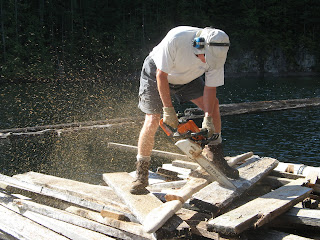 This year I grew tomatoes in pots. I have one Roma and two cherry tomatoes. Early in the season, there were just enough for salads and grilling. When they come in faster, I froze some for winter soups. Then all of a sudden, my cherry tomatoes turned ripe overnight. What was I to do with too many tiny tomatoes?
This year I grew tomatoes in pots. I have one Roma and two cherry tomatoes. Early in the season, there were just enough for salads and grilling. When they come in faster, I froze some for winter soups. Then all of a sudden, my cherry tomatoes turned ripe overnight. What was I to do with too many tiny tomatoes?
They aren’t the best variety to can, but I did. I washed, cut and put then into a big pot to cook over low heat. With larger tomatoes, you dip them in boiling water and skin them before stewing. Not so easy with the little guys. I used a wire whisk to mash them and release their skins as they cooked. When they were soft, I poured them into a strainer over large bowl. I used the wire whisk to force the pulp through the fairly large holes. Then I used a spoon my fingers to pick out as many of the small skins as possible. They curl, making them easy to spot and pick out. Yes, it was tedious but worth it.
I returned the juice and pulp to the large cooking and followed the recipe from the Farm Journal’s Freezing and Canning Cookbook for Meatless Spaghetti Sauce (page 244).
Meatless Spaghetti Sauce
(makes 3 pints)
16 pounds ripe tomatoes
1 cup chopped onion
4 tablespoons olive oil
1 tablespoon canning, pickling salt (don’t used iodized)
¼ teaspoon black pepper
½ teaspoon ground bay leaves
2 cloves minced garlic
1 teaspoon basil leaves
1 teaspoon oregano leaves
½ teaspoon parsley flakes
2 tablespoons brown sugar

I didn’t have enough tomatoes so I cut my recipe in half. I like chunky spaghetti sauce, so I peeled and diced four of my Roma tomatoes to add to the stewed mixture. I cooked the onions in the oil until translucent and added them to the mixture, followed by the remaining ingredients. It was too sweet for my taste. Next time I’ll reduce or eliminate the brown sugar. I also added a small green pepper and extra herbs to taste. Everything simmered with occasional stirring for one and a half hours until thickened.

In the meantime, I boiled the water in my canning pot and immersed the jars and lids to sterilize them. I poured the sauce into hot half pint jars (a better serving size for us) to ¼” of the rim. I wiped the rims clean, placed snap lids on top and screwed the rings on to finger tight. The jars were then processed in a boiling water bath for 20 minutes.
This is the first year I’ve tried canning. Margaret, a fellow blogger in Powell River, has inspired me to try. Take a look at her site Thistle Garden to sample some of the tasty things she has put up from her amazing garden. -- Margy
 Yesterday, Wayne and I helped our good friend John "raise" his new float cabin. John's been working for over a year in preparation for this day. First he had to find a logging company willing to sell him the large cedar logs he needed to build his floating foundation. That was no easy task. Once he had the logs, they had to be lashed together. That process was almost like sewing the logs together, only using 3/4" steel cables rather than thread.
Yesterday, Wayne and I helped our good friend John "raise" his new float cabin. John's been working for over a year in preparation for this day. First he had to find a logging company willing to sell him the large cedar logs he needed to build his floating foundation. That was no easy task. Once he had the logs, they had to be lashed together. That process was almost like sewing the logs together, only using 3/4" steel cables rather than thread.












































